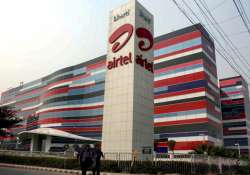Airtel upgrades over 9,000 network sites under Open Network initiative
Bharti Airtel has said it has received good response for its Open Network initiative, which offers network information to customers and seeks their feedback for improvement, and so far over 9,000 sites have been upgraded at various locations and over

Bharti Airtel has said it has received good response for its Open Network initiative, which offers network information to customers and seeks their feedback for improvement, and so far over 9,000 sites have been upgraded at various locations and over 30,000 existing sites have been optimised.
The initiative, which was launched in June 2016, made mobile network information public through an interactive online interface and asked consumers for their feedback to improve the same.
The company said that it had received feedback and suggestions from millions of customers across multiple open network touch points - Open Network portal, myAirtel app, Airtel Call Center and Airtel Stores.
“Till date, over 9,000 sites have been upgraded at various locations and over 30,000 existing sites have been optimised by Airtel's network team to resolve network-related issues. The task of putting up new towers is also under way,” the company said in a statement on Thursday.
Under the initiative, customers can see network coverage and signal strength at any location across India through a colour-coded interface that shows if coverage is excellent, good, moderate or non-existent.
Based on such inputs, Airtel said it engaged with customers to optimise network, with the initiative generating leads for installation of new sites.
“We believe that with this initiative, we have made a small but positive beginning towards improving our network and hope that going forward, more customers will join us,” Gopal Vittal, MD and CEO (India and South Asia), Bharti Airtel, said.
The programme is part of Airtel's Project Leap, a nation-wide network transformation drive under which the company has announced plans to invest Rs 60,000 crore to build a future-ready network.
With PTI Inputs